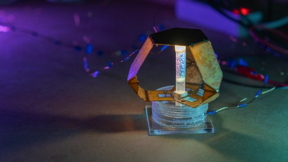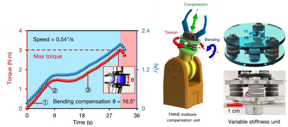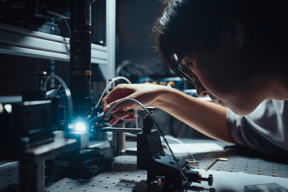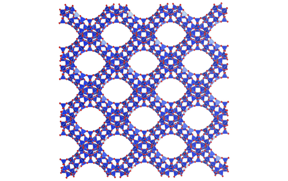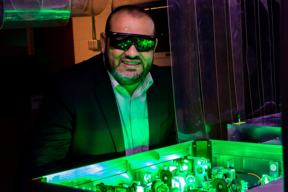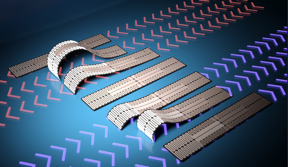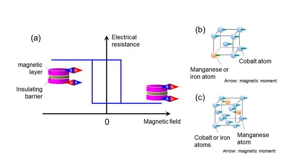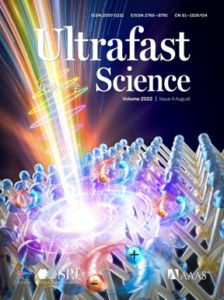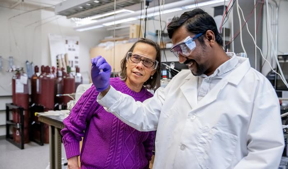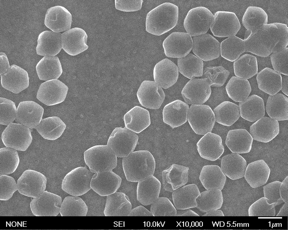Home > Press > A quantum leap in mechanical oscillator technology
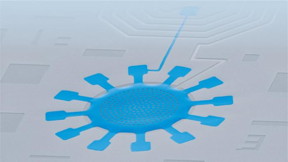 |
| Scanning electron microscope image of an ultra-coherent superconducting electro-mechanical system. CREDIT Amir Youssefi (EPFL) |
Abstract:
Over the past decade, scientists have made tremendous progress in generating quantum phenomena in mechanical systems. What seemed impossible only fifteen years ago has now become a reality, as researchers successfully create quantum states in macroscopic mechanical objects.
A quantum leap in mechanical oscillator technology
Lausanne, Switzerland | Posted on August 11th, 2023
By coupling these mechanical oscillators to light photons – known as “optomechanical systems”-, scientists have been able to cool them down to their lowest energy level close to the quantum limit, “squeeze them” to reduce their vibrations even further, and entangle them with each other. These advancements have opened up new opportunities in quantum sensing, compact storage in quantum computing, fundamental tests of quantum gravity, and even in the search for dark matter.
In order to efficiently operate optomechanical systems in the quantum regime, scientists face a dilemma. On one hand, the mechanical oscillators must be properly isolated from their environment to minimize energy loss; on the other hand, they must be well-coupled to other physical systems such as electromagnetic resonators to control them.
Striking this balance requires maximizing the oscillators’ quantum state lifetime that is impacted by their environment’s thermal fluctuations and oscillators frequency instabilities – what is known in the field as “decoherence”. This is a persistent challenge across various systems, from the gigantic mirrors used in gravitational wave detectors to tiny trapped particles in high vacuum. Compared to other technologies like superconducting qubits or ion traps, today’s opto- and electro-mechanical systems still show higher decoherence rates.
Now, scientists at the laboratory of Tobias J. Kippenberg at EPFL have tackled the problem by developing a superconducting circuit optomechanical platform that shows ultra-low quantum decoherence while maintaining large optomechanical coupling that results in a high-fidelity quantum control. The work is recently published in Nature Physics.
“In simple words, we demonstrated the longest quantum state lifetime ever achieved in a mechanical oscillator, which can be used as a quantum storage component in quantum computing and communication systems,” says Amir Youssefi, a PhD student who led the project. “This is a big achievement and impacts a wide range of audiences in quantum physics, electrical engineering, and mechanical engineering.”
The key element of the breakthrough is a “vacuum-gap drumhead capacitor”, a vibrating element made of a thin aluminum film suspended over a trench in a silicon substrate. The capacitor serves as the vibrating component of the oscillator and also forms a resonant microwave circuit.
Through a novel nanofabrication technique, the team significantly reduced mechanical losses in the drumhead resonator, achieving an unprecedented thermal decoherence rate of only 20 Hz, equivalent to a quantum state lifetime of 7.7 milliseconds – the longest ever achieved in a mechanical oscillator.
The remarkable decrease in thermally induced decoherence allowed the researchers to use optomechanical cooling technique, resulting in an impressive 93% fidelity of the quantum state occupation in the ground state. Additionally, the team achieved mechanical squeezing below the zero-point-fluctuation of motion, with a value of -2.7 dB.
“This level of control allows us to observe the free evolution of mechanical squeezed states preserving its quantum behavior for an extended period of 2 milliseconds, thanks to the exceptionally low pure dephasing rate of only 0.09 Hz in the mechanical oscillator,” says Shingo Kono, who contributed to the research.
“Such ultra-low quantum decoherence not only increases the fidelity of quantum control and measurement of macroscopic mechanical systems, but will equally benefit interfacing with superconducting qubits and places the system in a parameter regime suitable for tests of quantum gravity,” says Mahdi Chegnizadeh, another member of the research team “The considerably longer storage time compared to superconducting qubits makes the platform a perfect candidate for quantum-storage applications.”
The device was fabricated in the Center of MicroNanoTechnology (CMi) at EPFL.
####
For more information, please click here
Contacts:
Media Contact
Julie Haffner
Ecole Polytechnique Fédérale de Lausanne
Office: 41-793-245-755
Expert Contacts
Amir Youssefi
EPFL
Office: +41 21 693 03 07
Shingo Kono
EPFL
Office: +41 21 693 68 42
Mahdi Chegnizadeh
EPFL
Office: +41 21 693 53 78
Copyright © Ecole Polytechnique Fédérale de Lausanne
If you have a comment, please Contact us.
Issuers of news releases, not 7th Wave, Inc. or Nanotechnology Now, are solely responsible for the accuracy of the content.
| Related Links |
| Related News Press |
News and information
![]() Femtosecond laser technique births “dancing microrobots”: USTC’s breakthrough in multi-material microfabrication August 11th, 2023
Femtosecond laser technique births “dancing microrobots”: USTC’s breakthrough in multi-material microfabrication August 11th, 2023
![]() USTC achieved dynamic imaging of interfacial electrochemistry August 11th, 2023
USTC achieved dynamic imaging of interfacial electrochemistry August 11th, 2023
![]() Simple ballpoint pen can write custom LEDs August 11th, 2023
Simple ballpoint pen can write custom LEDs August 11th, 2023
Quantum Physics
Possible Futures
![]() USTC achieved dynamic imaging of interfacial electrochemistry August 11th, 2023
USTC achieved dynamic imaging of interfacial electrochemistry August 11th, 2023
![]() Simple ballpoint pen can write custom LEDs August 11th, 2023
Simple ballpoint pen can write custom LEDs August 11th, 2023
![]() Chloride ions from seawater eyed as possible lithium replacement in batteries of the future August 11th, 2023
Chloride ions from seawater eyed as possible lithium replacement in batteries of the future August 11th, 2023
Discoveries
![]() Simple ballpoint pen can write custom LEDs August 11th, 2023
Simple ballpoint pen can write custom LEDs August 11th, 2023
![]() Chloride ions from seawater eyed as possible lithium replacement in batteries of the future August 11th, 2023
Chloride ions from seawater eyed as possible lithium replacement in batteries of the future August 11th, 2023
![]() Tattoo technique transfers gold nanopatterns onto live cells August 11th, 2023
Tattoo technique transfers gold nanopatterns onto live cells August 11th, 2023
Announcements
![]() Simple ballpoint pen can write custom LEDs August 11th, 2023
Simple ballpoint pen can write custom LEDs August 11th, 2023
![]() Chloride ions from seawater eyed as possible lithium replacement in batteries of the future August 11th, 2023
Chloride ions from seawater eyed as possible lithium replacement in batteries of the future August 11th, 2023
![]() Tattoo technique transfers gold nanopatterns onto live cells August 11th, 2023
Tattoo technique transfers gold nanopatterns onto live cells August 11th, 2023
Interviews/Book Reviews/Essays/Reports/Podcasts/Journals/White papers/Posters
![]() Simple ballpoint pen can write custom LEDs August 11th, 2023
Simple ballpoint pen can write custom LEDs August 11th, 2023
![]() Chloride ions from seawater eyed as possible lithium replacement in batteries of the future August 11th, 2023
Chloride ions from seawater eyed as possible lithium replacement in batteries of the future August 11th, 2023
![]() Tattoo technique transfers gold nanopatterns onto live cells August 11th, 2023
Tattoo technique transfers gold nanopatterns onto live cells August 11th, 2023
Quantum nanoscience
![]() Electron collider on a chip June 30th, 2023
Electron collider on a chip June 30th, 2023
![]() Quantum materials: Electron spin measured for the first time June 9th, 2023
Quantum materials: Electron spin measured for the first time June 9th, 2023
- SEO Powered Content & PR Distribution. Get Amplified Today.
- PlatoData.Network Vertical Generative Ai. Empower Yourself. Access Here.
- PlatoAiStream. Web3 Intelligence. Knowledge Amplified. Access Here.
- PlatoESG. Automotive / EVs, Carbon, CleanTech, Energy, Environment, Solar, Waste Management. Access Here.
- PlatoHealth. Biotech and Clinical Trials Intelligence. Access Here.
- ChartPrime. Elevate your Trading Game with ChartPrime. Access Here.
- BlockOffsets. Modernizing Environmental Offset Ownership. Access Here.
- Source: http://www.nanotech-now.com/news.cgi?story_id=57384
- :has
- :is
- :not
- $UP
- 10
- 20
- 21st
- 26
- 2D
- 30th
- 53
- 7
- 7th
- 9th
- a
- Able
- accuracy
- achieved
- achievement
- achieving
- across
- Additionally
- advancements
- ago
- allowed
- allows
- also
- an
- and
- Another
- Application
- applications
- ARE
- AS
- At
- audiences
- AUGUST
- Balance
- batteries
- BE
- become
- been
- below
- benefit
- Big
- breakthrough
- but
- by
- CAN
- candidate
- Center
- CGI
- challenge
- characteristic
- click
- Close
- Columbia
- COM
- comment
- Communication
- communication systems
- compared
- component
- computing
- Confirm
- content
- contributed
- control
- Cool
- could
- create
- credit
- crucial
- custom
- dance
- Dancing
- Dark
- Dark matter
- decade
- decrease
- demonstrated
- developed
- developing
- device
- discover
- down
- dynamic
- dynamics
- each
- efficiently
- electrical engineering
- Electronic
- element
- enable
- end
- energy
- Engineering
- Environment
- equally
- Equivalent
- Ether (ETH)
- evaluation
- Even
- EVER
- evolution
- experiments
- Face
- fidelity
- field
- Film
- First
- fluctuations
- For
- forms
- Free
- Frequency
- from
- fundamental
- further
- future
- generating
- gif
- Gold
- Graphene
- gravitational
- gravity
- Ground
- hand
- Have
- High
- higher
- http
- HTTPS
- if
- image
- Imaging
- impacted
- Impacts
- impossible
- impressive
- in
- Inc.
- Increases
- information
- isolated
- ITS
- July
- june
- Key
- known
- laboratory
- large
- laser
- lasers
- layered
- lead
- Leap
- Led
- Level
- lifetime
- light
- like
- LIMIT
- links
- lithium
- live
- longer
- loss
- losses
- Low
- lowest
- made
- maintaining
- MAKES
- materials
- Matter
- maximizing
- May..
- measured
- measurement
- mechanical
- mechanical engineering
- member
- metal
- Microscope
- more
- motion
- must
- nanotechnology
- Nature
- net
- New
- news
- nexus
- Noise
- novel
- now
- nuclear
- objects
- observe
- occupation
- of
- Offers
- on
- ONE
- only
- opened
- operate
- opportunities
- or
- order
- Other
- over
- parameter
- past
- perfect
- period
- phd
- Photons
- PHP
- physical
- Physics
- Places
- platform
- plato
- Plato Data Intelligence
- PlatoData
- please
- possible
- Post
- posted
- potential
- preserving
- press
- Press Release
- Problem
- Progress
- project
- properly
- properties
- published
- Push
- Quantum
- quantum computing
- quantum physics
- qubits
- random
- range
- Rate
- Rates
- Reality
- recently
- reduce
- Reduced
- regime
- release
- Releases
- remarkable
- replacement
- requires
- research
- researchers
- responsible
- resulting
- Results
- return
- reveal
- Revealed
- s
- Save
- says
- scanning
- scientists
- Search
- seemed
- Semiconductors
- serves
- Share
- show
- Shows
- significant
- significantly
- Silicon
- Simple
- solely
- Spin
- start
- State
- States
- Still
- storage
- Student
- submit
- Successfully
- such
- suitable
- suspended
- switzerland
- system
- Systems
- team
- Technologies
- Technology
- tests
- thanks
- that
- The
- their
- Them
- thermal
- These
- they
- this
- time
- to
- today
- transfers
- traps
- tremendous
- twist
- unprecedented
- unwanted
- us
- use
- used
- USTC
- Vacuum
- value
- various
- Voltage
- was
- Wave
- we
- What
- What is
- which
- while
- WHO
- wide
- Wide range
- will
- with
- words
- Work
- write
- Yahoo
- years
- you
- zephyrnet












